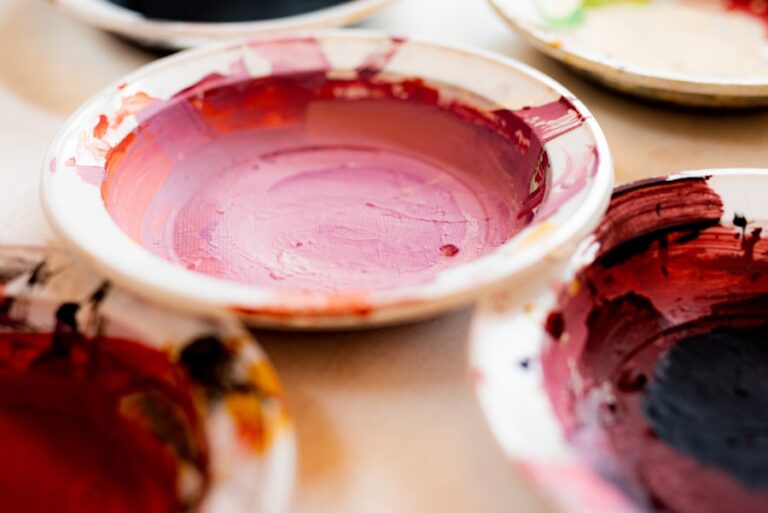From Beginner to Pro: Easy Digital Art Ideas to Level Up Your Skills
Digital art is a form of artistic expression that utilizes digital technology as a medium. It encompasses a wide range of artistic styles and techniques, from digital painting and illustration to 3D modeling and animation. With the advancement of technology, digital art has become increasingly popular and accessible, allowing artists to create stunning and immersive works of art using digital tools and software.
One of the key advantages of digital art is its versatility and flexibility. Artists can easily experiment with different styles, colors, and textures without the limitations of traditional art materials. Digital art also offers the ability to easily edit and manipulate artwork, making it a popular choice for commercial and professional projects. Whether you’re a beginner looking to explore the world of digital art or a seasoned artist looking to expand your skills, there are a variety of techniques and concepts to explore in the world of digital art.
Basic Digital Art Techniques for Beginners
For beginners, getting started with digital art can be both exciting and overwhelming. However, there are a few basic techniques that can help you get started on your digital art journey. One of the most fundamental skills to learn is digital drawing and painting. This involves using a stylus or digital pen on a graphics tablet or touchscreen device to create artwork using digital software such as Adobe Photoshop or Procreate. Learning how to use layers, brushes, and blending modes are essential skills for creating digital paintings and illustrations.
Another important technique for beginners is understanding the principles of composition and color theory. Composition refers to the arrangement of elements within a piece of artwork, while color theory explores the relationships between different colors and how they can be used to create harmony or contrast in a piece. Understanding these principles can help beginners create more visually appealing and balanced artwork. Additionally, learning how to use basic tools such as selection tools, gradients, and filters can help beginners add depth and dimension to their digital artwork.
Intermediate Digital Art Ideas to Enhance Skills
Once you have mastered the basics of digital art, there are a variety of intermediate techniques and ideas to explore to enhance your skills. One popular technique for intermediate digital artists is digital photo manipulation. This involves combining and editing multiple images to create a new and unique composition. Photo manipulation allows artists to create surreal and imaginative artwork by blending different elements together.
Another intermediate concept to explore is digital sculpting and 3D modeling. This involves using specialized software such as ZBrush or Blender to create three-dimensional models and sculptures. Learning how to sculpt and model in 3D can open up new possibilities for creating characters, environments, and objects in digital art. Additionally, exploring advanced brush techniques, texture mapping, and lighting effects can help intermediate artists add depth and realism to their digital artwork.
Advanced Digital Art Concepts for Pro Level
For pro-level digital artists, there are a variety of advanced concepts and techniques to explore to take your skills to the next level. One advanced concept to explore is digital animation and motion graphics. This involves creating moving images and visual effects using specialized software such as Adobe After Effects or Cinema 4D. Learning how to animate characters, objects, and environments can open up new opportunities for storytelling and visual communication in digital art.
Another advanced technique for pro-level digital artists is digital matte painting and concept art. This involves creating detailed and realistic environments and landscapes using digital painting techniques. Matte painting is often used in film and video game production to create immersive and realistic backgrounds. Learning how to create detailed textures, lighting effects, and atmospheric perspective can help pro-level artists create stunning and immersive digital environments.
Tips for Transitioning from Beginner to Pro in Digital Art
Transitioning from a beginner to a pro-level digital artist takes time, dedication, and practice. One important tip for transitioning from beginner to pro is to continuously seek out new learning opportunities. This can involve taking online courses, attending workshops, or studying under experienced mentors. Learning from others can help you gain new perspectives and techniques that can enhance your skills as a digital artist.
Another important tip for transitioning from beginner to pro is to build a strong portfolio of work. This involves creating a body of work that showcases your skills, style, and creativity as a digital artist. A strong portfolio can help you attract clients, collaborators, and job opportunities in the digital art industry. Additionally, seeking feedback from peers and professionals can help you identify areas for improvement and growth as a digital artist.
Digital Art Projects to Challenge Your Skills
Challenging yourself with new digital art projects can help you expand your skills and creativity as an artist. One challenging project idea is creating a series of character designs. This involves developing a group of original characters with unique personalities, appearances, and backstories. Character design projects can help you explore different styles, expressions, and emotions in your artwork.
Another challenging project idea is creating a digital comic or graphic novel. This involves developing a narrative story with sequential artwork that tells a compelling visual story. Creating a comic or graphic novel can help you explore storytelling, pacing, and visual communication in your artwork. Additionally, experimenting with different panel layouts, compositions, and visual effects can help you push the boundaries of your skills as a digital artist.
Resources for Continuing Your Digital Art Journey
Continuing your digital art journey involves seeking out resources and communities that can support your growth as an artist. One valuable resource for digital artists is online communities and forums such as DeviantArt or ArtStation. These platforms allow artists to share their work, receive feedback, and connect with other artists from around the world. Engaging with these communities can help you gain inspiration, feedback, and support for your artistic journey.
Another valuable resource for continuing your digital art journey is seeking out mentorship or professional development opportunities. This can involve studying under experienced artists or industry professionals who can provide guidance, feedback, and advice on your artistic development. Additionally, attending industry events such as conventions or workshops can help you network with other artists and professionals in the digital art industry. By seeking out these resources, you can continue to grow and evolve as a digital artist throughout your career.





